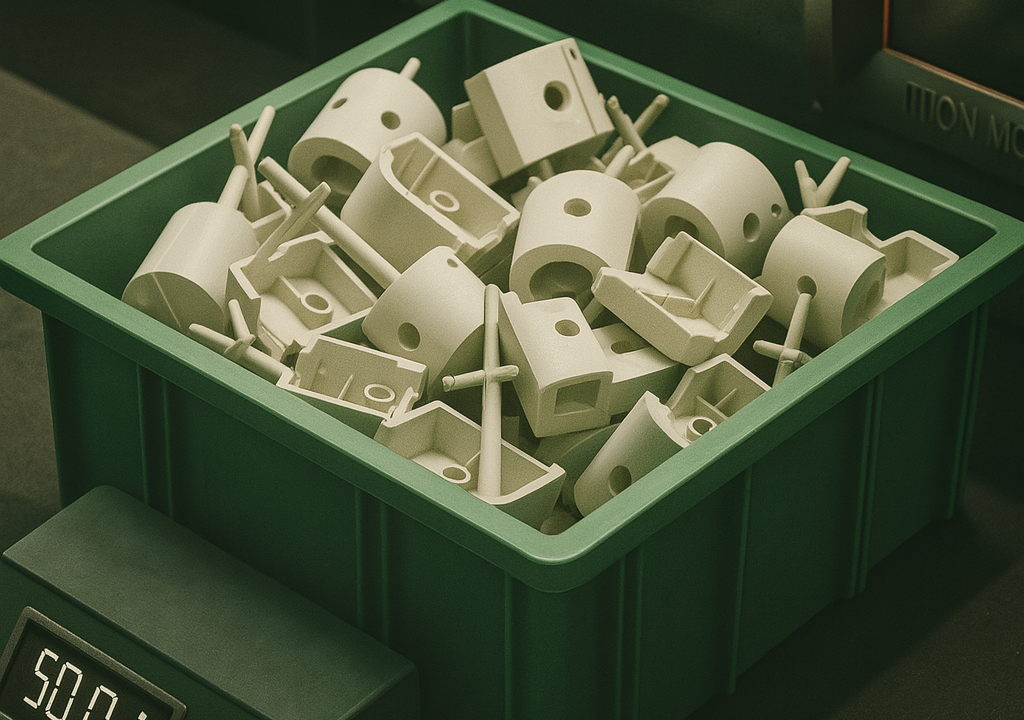
Flexibility is now an essential requirement of manufacturers in the rapidly moving markets. The product life cycles are reduced, customisation is a great desire, companies have to deliver products into the market rapidly without investing in mass production. Low volume injection molding is the best solution — the production method that will fill the gap between prototyping and mass production.
What Is Low Volume Injection Molding?
Low volume injection molding follows the same steps as traditional injection molding (injecting melted plastic into a mould to solidify components) but is concerned with smaller production batches, usually between 100 and 10,000. This method is ideal when launching a product or doing market research, or when experiencing minimal production of spares.

In contrast to high-volume molds where the material is hardened steel, low-volume tools can often be made of aluminium or soft steel, which saves time in machining and saves on tooling costs. These molds can be created within weeks rather than months, with time-to-market and financial risk reduced.
In a nutshell, the low volume injection molding method is a blend of prototyping and production manufacturing in terms of speed and quality; thus, low volume injection molding proves to be cost-effective to early-stage or custom projects.
Important Benefits of Low Volume Injection Molding
1. Reduced Tooling Costs
Molds in high volumes may cost tens of thousands. Companies reduce initial tooling costs by far through the use of lighter materials like aluminium and can test the markets and refine their products before committing resources to scale.
2. Faster Time-to-Market
Molds with low volume could be designed, machined, and tested in a matter of weeks. It enables companies to respond rapidly to market opportunities, introduce products faster, and be ahead of competitors.
3. Design Flexibility
Since molds are cheaper and can be modified more easily, engineers can do quick design changes depending on feedback or performance testing, which saves them time and money.
4. Lower Risk
Companies reduce financial risk by making smaller batches. When a product performs poorly, the losses incurred are minimal; when it performs well, then the production can be expanded effectively.
Industries that are impacted positively by Low Volume Injection Molding
Medical & Healthcare: Suited to short-run medical equipment, prototyping and small-volume regulated parts.
Automotive & Aerospace: Facilitates the development of customised elements, spare parts, and pre-production models.
Consumer Electronics: Ideal in rapidly designed products like casings, connectors and enclosures.
Startups and Entrepreneurs: Provides affordable production quality parts to test and present to investors.
Material Options
Low volume molding takes the same broad spectrum of material utilized in mass production, which guarantees strength, durability, and consistency in appearance. Common choices include:
ABS: Powerful, multifunctional, and economical.
Polycarbonate (PC): Impact-resistant and transparent.
Nylon (PA): Rubber-hard, wear-resistant, and chemically resistant.
TPU: Plastic, tough and perfect in consumer grips or electronics.
Medical-Grade Polymers: Biocompatible and sterilisable in the medical field.
Cost Considerations
Although per-part prices can be more expensive than mass production because of lower volumes, the investment is less. Enterprises eliminate high tooling costs and excess stock. The balance renders low volume injection molding economical when forming pilot production, niche markets, and proof-of-concept manufacturing.
The Process in Brief
Design Review: Engineers determine manufacturability and design refinements.
Tool Fabrication: Molds are fabricated using aluminium or soft steel in quick turnaround.
Trial Run: The first samples check quality, fit, and performance.
Production: Complete runs are performed — generally 100 -7,000 parts.
Quality Control: Every batch is checked on precision to maintain consistency.
Real-World Applications
Medical Startup: Made 2,000 biocompatible diagnostic parts in four weeks — without a $50,000 tooling.
Automotive Supplier: Produced 500 nylon housings of various designs to suit aftermarket cars, and thus able to respond promptly to customer demand.
Conclusion
Low volume injection molding provides the accuracy of normal molding at a higher speed, flexibility, and cost. It offers a resourceful, risk-free channel to market-ready components, whether to start-ups experimenting with prototypes or to long-established manufacturers looking to launch niche products.
In search of a reliable collaborator in your new venture, consider our low volume injection molding services — a program created to be a solution to modern, nimble manufacturing.